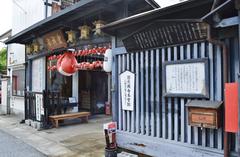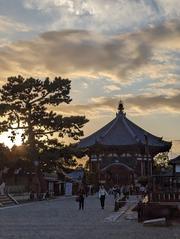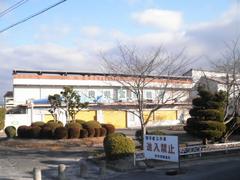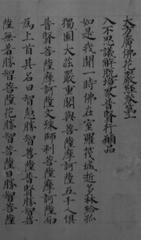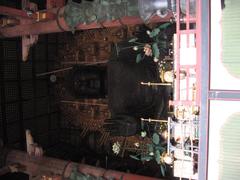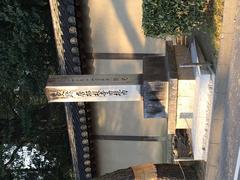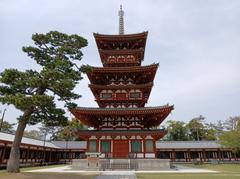
Tamukeyama Hachiman Shrine Visiting Hours, Tickets, and Historical Significance in Nara
Date: 04/07/2025
Introduction
Tamukeyama Hachiman Shrine (手向山八幡宮), located on the eastern slope of Mount Wakakusa within Nara Park, is one of Nara’s most historic and spiritually significant Shinto shrines. Founded in 749 CE to coincide with the completion of the Great Buddha (Daibutsu) at Tōdai-ji, it was established as a guardian shrine dedicated to Hachiman—the divine protector of Japan and its warriors. This site is a compelling example of religious syncretism from the Nara period, representing the fusion of Shinto and Buddhist traditions, a practice known as shinbutsu-shūgō, which remained prevalent until the Meiji Restoration.
Visitors to Tamukeyama Hachiman Shrine experience a rich tapestry of Japanese cultural heritage, including impressive architectural features, centuries-old sacred rituals, and the legacy of imperial patronage. The shrine grounds feature classic Shinto elements such as torii gates, komainu (lion-dog) guardians, sacred camphor trees, and sub-shrines that further highlight its historical depth. The shrine is particularly renowned for its connection to local festivals, such as the October Reitaisai, and for providing a tranquil yet profound setting for reflection, surrounded by landmarks like Tōdai-ji, Kasuga Taisha, and the famous Nara Park deer.
For official details and additional insights, visit Nara Women’s University, the Nara City Official Travel Guide, and Wayusoan Travel Blog.
Establishment and Historical Context
Tamukeyama Hachiman Shrine was established in 749 CE, in direct connection to the completion of Tōdai-ji’s Great Buddha statue (Wikipedia). The imperial court invited the kami Hachiman from Usa Hachiman Shrine (Kyushu) to safeguard the new capital and the monumental project. Its location beside Tōdai-ji reflects the era’s religious blending, with Shinto and Buddhist practices coexisting in harmony (Nara Women’s University).
The Shrine’s Role in Medieval and Early Modern Japan
Throughout history, Tamukeyama Hachiman Shrine played a prominent role in both religious and political life. The shrine’s mikoshi (portable shrine) was historically used in processions and demonstrations, symbolizing divine support in political matters. Even after the Meiji period’s separation of Shinto and Buddhism (shinbutsu bunri), Tamukeyama Hachiman retained its importance as a site of worship and cultural continuity (Nara Women’s University).
Architectural Features and Symbolism
Approaching the shrine, visitors pass through multiple torii gates, starting with the Ichi no Torii (First Torii Gate) (Wayusoan). The sandō (path) is flanked by komainu statues and stone lanterns, creating a sacred atmosphere. The main buildings include:
- Honden (Main Sanctuary): Built in the nagare-zukuri style with an elegant asymmetrical roof and cypress bark thatching. This structure is designated as an Important Cultural Property (Agency for Cultural Affairs).
- Haiden (Worship Hall): The primary space for ceremonies and prayers, designed for openness and accessibility.
- Heiden (Offering Hall): Connects the haiden and honden, used for ritual offerings.
- Auxiliary Structures: Kagura-den (for sacred music and dance), shamusho (shrine office for amulets and information), and a modest treasure house.
Distinctive features include the shrine’s crest, the Goshinmon or Mukai hato (“facing pigeons”), symbolizing peace and harmony.
Enshrined Deities (Kami)
Tamukeyama Hachiman Shrine enshrines several important kami, including:
- Hachiman (Emperor Ōjin): The principal deity, protector of warriors, and the imperial family (Wikipedia).
- Empress Jingū: Legendary regent and military leader (Nara Women’s University).
- Emperor Chūai: 14th emperor and consort of Empress Jingū.
- Emperor Nintoku: Early emperor, emphasizing imperial lineage.
- Hime Okami: Feminine protective deity (Nara Women’s University).
Rituals, Festivals, and Cultural Significance
The shrine hosts several important annual events tied to the agricultural calendar and regional traditions:
- Reitaisai (Grand Festival): Held in October, featuring traditional music, dance, and processions (Nara City Official Travel Guide).
- Setsubun (February): Bean-throwing to ward off evil.
- Shichi-Go-San (November): Blessings for children at milestone ages.
Tamukeyama Hachiman’s role in blessing the Daibutsu’s casting and its continued participation in Nara’s major festivals underscore its enduring cultural and spiritual relevance (Japan National Tourism Organization).
Notable Sub-Shrines and Features
Within the precincts, visitors can explore:
- Wakamiya Shrine: Dedicated to local tutelary deities (Wayusoan).
- Daikokuden: Associated with prosperity.
- Temizusha (Water Basin): For purification rituals.
- Koshikake-ishi: Stone seat linked to scholar Sugawara no Michizane.
Ancient camphor and cedar trees wrapped in shimenawa (sacred ropes) mark the presence of kami, reinforcing the shrine’s connection to nature.
Shrine Layout and Integration with Nara Park
Nestled at the base of Mount Wakakusa and adjacent to Tōdai-ji, Tamukeyama Hachiman Shrine is harmoniously integrated into the natural landscape (visitnara.jp). The main entrance faces south, and the approach is lined with stone lanterns and seasonal foliage. The shrine offers partial views across Nara Park, which is home to freely roaming deer, further enhancing the spiritual ambiance.
Visitor Information: Hours, Tickets, and Practical Tips
- Visiting Hours: Open daily from 6:00 AM to 5:00 PM. (Some sources indicate opening from 7:00 AM; check official sites for updates.)
- Admission: Free entry to the shrine grounds; donations are welcomed.
- Tickets: No regular admission fee; special events or exhibitions may have charges.
- Guided Tours: Available through local tour operators or as part of broader Nara historical tours; audioguides and virtual tours may also be accessible.
- Accessibility: The approach includes gentle slopes and steps. While the outer grounds are mostly paved, wheelchair and stroller access is limited.
- Facilities: Basic restrooms, vending machines, and nearby rest areas.
- Travel Tips: Visit during cherry blossom season or autumn foliage for the most picturesque experience. Respect shrine etiquette—bow at the torii, purify at the water basin, and observe silence during rituals.
- Nearby Attractions: Tōdai-ji Temple, Nara National Museum, Kasuga Taisha Shrine, and the Yamanobe-no-michi trail.
On-Site Experience
Despite its proximity to popular tourist attractions, Tamukeyama Hachiman Shrine maintains a peaceful, contemplative atmosphere. The modest shrine buildings and their natural surroundings invite quiet reflection. Rituals such as writing wishes on ema (votive plaques) and engaging in purification rites are accessible to visitors.
Best Times to Visit
- Autumn (Late October–November): Peak maple foliage and vibrant festival atmosphere.
- Spring: Pleasant weather and cherry blossoms.
- Festival Days: The October festival is the highlight for cultural immersion.
Frequently Asked Questions (FAQ)
Q: What are the Tamukeyama Hachiman Shrine visiting hours?
A: Generally open from 6:00 AM to 5:00 PM, but hours may vary during special events.
Q: Is there an admission fee?
A: No, entrance to the shrine is free; donations are appreciated.
Q: Are guided tours available?
A: Yes, through local tour operators, often including Tōdai-ji and other Nara sites.
Q: Is the shrine wheelchair accessible?
A: Access is limited due to steps and unpaved paths; assistance is recommended.
Q: When is the best time to visit?
A: Autumn for foliage, or during the October festival for cultural events.
Conclusion
Tamukeyama Hachiman Shrine stands as a living testament to Japan’s religious syncretism, imperial traditions, and enduring cultural values. Its tranquil grounds, historical legacy, and active role in local festivals make it a rewarding destination for anyone exploring Nara’s historical sites. Plan your visit during the vibrant autumn season or attend one of its traditional festivals for a truly memorable experience.
To enhance your visit, download the Audiala app for guided audio tours, latest event updates, and virtual experiences. For further planning resources, consult the official Nara tourism website, Japan Guide, and the links below.
Sources and Further Reading
- Tamukeyama Hachiman Shrine: A Complete Visitor’s Guide to Nara’s Historic Shinto Landmark, 2020, Wayusoan
- Cultural and Religious Significance of Tamukeyama Hachiman Shrine, Nara Women’s University
- Tamukeyama Hachiman Shrine Historical Context and Visitor Information, Nara City Official Travel Guide
- Tamukeyama Hachiman Shrine Visiting Hours, Tickets & Nara Historical Sites Guide, Visit Nara
- Hachiman Deity and Syncretism in Japanese Religion, Encyclopedia Britannica
- Japan Guide: Nara Shrines and Temples
- Visitor Experience and Practical Tips for Tamukeyama Hachiman Shrine, Kanpai Japan




